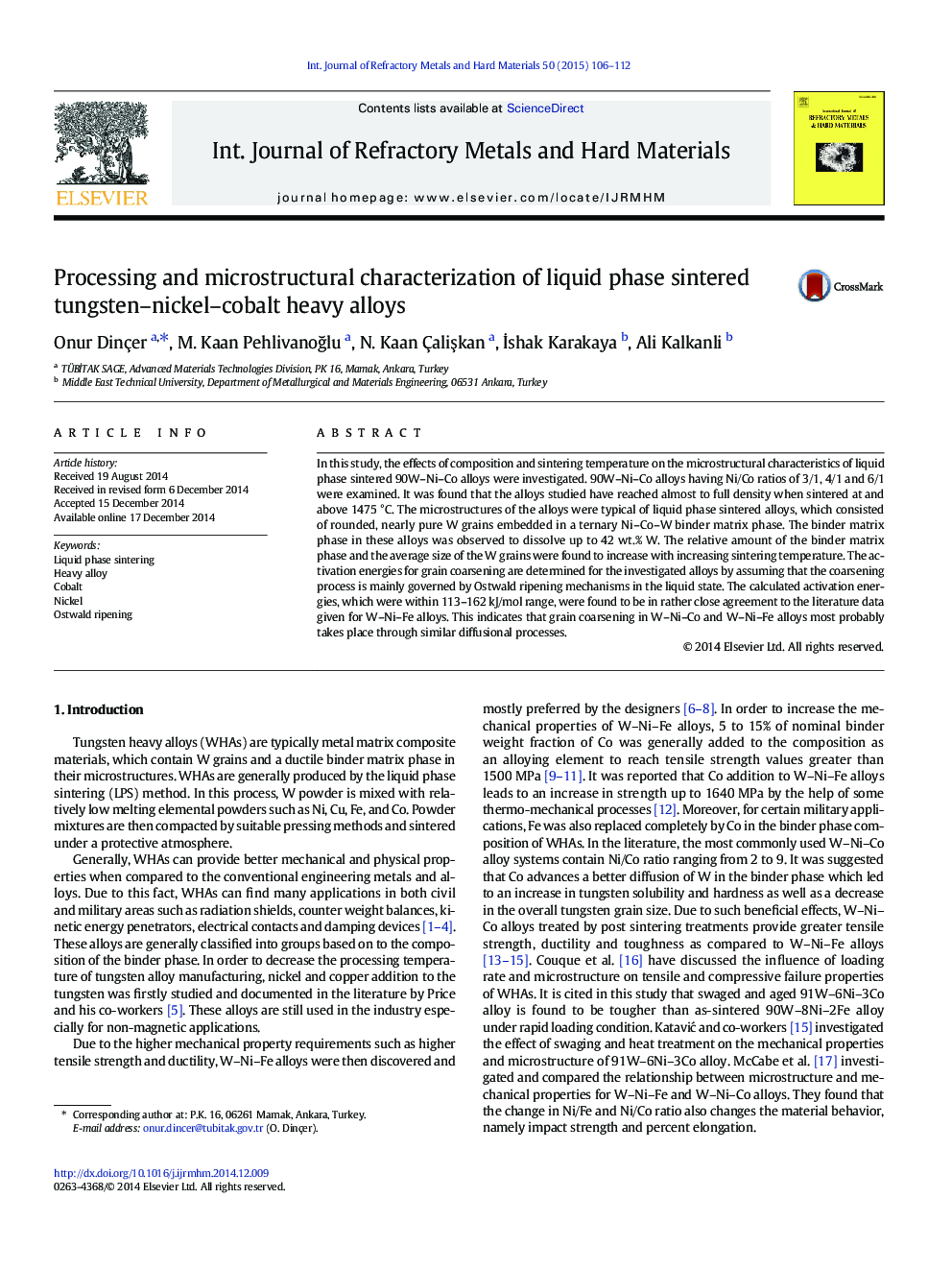| Article ID | Journal | Published Year | Pages | File Type |
|---|---|---|---|---|
| 1602769 | International Journal of Refractory Metals and Hard Materials | 2015 | 7 Pages |
•W–Ni–Co heavy alloys were liquid phase sintered by using elemental W, Ni and Co powders.•Investigated alloys have reached almost full density above 1475 °C.•Ni + Co binder matrix phase dissolved up to 42 wt.% W.•Average W grain size increases with increasing sintering temperature.
In this study, the effects of composition and sintering temperature on the microstructural characteristics of liquid phase sintered 90W–Ni–Co alloys were investigated. 90W–Ni–Co alloys having Ni/Co ratios of 3/1, 4/1 and 6/1 were examined. It was found that the alloys studied have reached almost to full density when sintered at and above 1475 °C. The microstructures of the alloys were typical of liquid phase sintered alloys, which consisted of rounded, nearly pure W grains embedded in a ternary Ni–Co–W binder matrix phase. The binder matrix phase in these alloys was observed to dissolve up to 42 wt.% W. The relative amount of the binder matrix phase and the average size of the W grains were found to increase with increasing sintering temperature. The activation energies for grain coarsening are determined for the investigated alloys by assuming that the coarsening process is mainly governed by Ostwald ripening mechanisms in the liquid state. The calculated activation energies, which were within 113–162 kJ/mol range, were found to be in rather close agreement to the literature data given for W–Ni–Fe alloys. This indicates that grain coarsening in W–Ni–Co and W–Ni–Fe alloys most probably takes place through similar diffusional processes.
